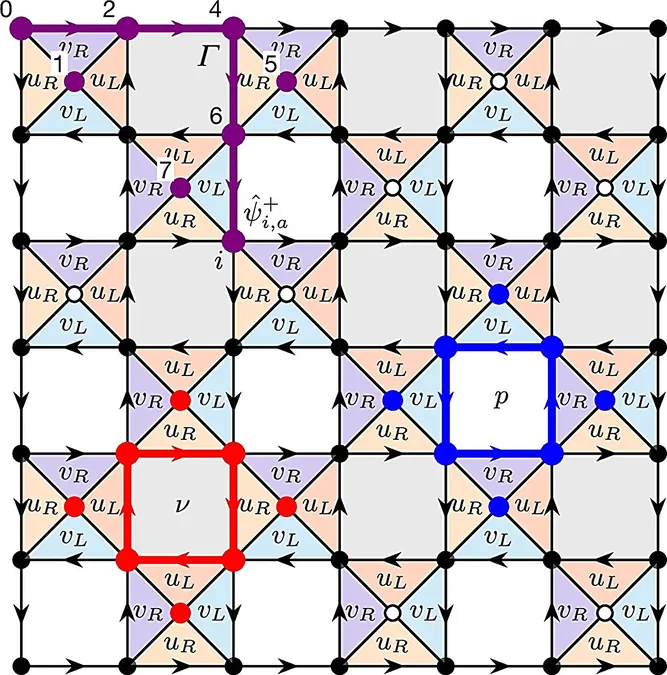
Groundbreaking Research Unveils Hidden Particles That Could Transform Our Understanding of Quantum Mechanics!
2025-01-08
Author: Ming
Introduction
In an astonishing turn of events, physicists have uncovered a theoretical possibility that could shake the very foundations of quantum mechanics. From the inception of this scientific field, particles have been predominantly classified into two categories: bosons and fermions, each with distinct behaviors. However, groundbreaking research conducted by Kaden Hazzard, a physicist at Rice University, and former graduate student Zhiyuan Wang, indicates that there may be particles that are neither—known as paraparticles.
The Concept of Paraparticles
Published in the prestigious journal *Nature*, their study employs advanced mathematical techniques to propose the existence of paraparticles, a concept many believed to be inconceivable. "We determined that new types of particles we never knew of before are possible," Hazzard commented, capturing the excitement of this scientific breakthrough.
Traditionally, bosons can occupy the same quantum state in unlimited numbers, while fermions abide by the Pauli exclusion principle, allowing only one fermion per state. This principle is fundamental not only for the structure of the periodic table but also for the reason you can sit comfortably in a chair without passing through it.
Historical Context
The quest to identify alternative particles began in the early 20th century, culminating in the formulation of paraparticle theory in the early 1950s, only to see skepticism arise in the following decades. By the 1970s, many physicists believed paraparticles were merely masked bosons or fermions, with the notable exception of anyons, exotic particles confined to two-dimensional spaces.
Challenging Traditional Assumptions
In a significant move, Hazzard and Wang challenged the long-held assumptions of previous mathematical studies, using the Yang-Baxter equation—a vital tool in describing particle interactions—and advanced group theory. They meticulously demonstrated that paraparticles could theoretically coexist within the established laws of physics, particularly highlighting their potential in condensed matter systems like magnets.
The Role of Advanced Mathematics
"This is cross-disciplinary research that involves several areas of theoretical physics and mathematics," stated Wang, who is now a postdoctoral researcher at the Max Planck Institute of Quantum Optics in Germany. Their research utilized sophisticated mathematical frameworks such as Lie algebra, Hopf algebra, and tensor network diagrams, allowing them to construct models of systems that could give rise to paraparticles.
Unique Properties of Paraparticles
Remarkably, the team revealed that paraparticles exhibit unusual reactions when swapping positions with their internal states, setting them apart from the conventional behaviors of fermions and bosons. This discovery paves the way for deeper inquiries into new physical phenomena that could manifest in systems characterized by paraparticles.
Looking Ahead
As researchers ponder the prospect of experimental validation of these theoretical models, they are optimistic yet cautious. "To realize paraparticles in experiments, we need more realistic theoretical proposals," remarked Wang. The implications of such discoveries could extend far beyond theoretical physics, potentially revolutionizing fields like quantum information and computation, where manipulating internal states of particles could lead to secure communication methods.
Conclusion
The full scope of paraparticles and their applications remains largely speculative at this stage, but the door has been opened for further exploration. "I don't know where it will go, but I know it will be exciting to find out," Hazzard insisted, igniting curiosity about the uncharted territories of particle physics.
Could the discovery of these elusive paraparticles revolutionize science as we know it? Stay tuned—the journey of scientific exploration is just beginning, and the potential is limitless!


 Brasil (PT)
Brasil (PT)
 Canada (EN)
Canada (EN)
 Chile (ES)
Chile (ES)
 Česko (CS)
Česko (CS)
 대한민국 (KO)
대한민국 (KO)
 España (ES)
España (ES)
 France (FR)
France (FR)
 Hong Kong (EN)
Hong Kong (EN)
 Italia (IT)
Italia (IT)
 日本 (JA)
日本 (JA)
 Magyarország (HU)
Magyarország (HU)
 Norge (NO)
Norge (NO)
 Polska (PL)
Polska (PL)
 Schweiz (DE)
Schweiz (DE)
 Singapore (EN)
Singapore (EN)
 Sverige (SV)
Sverige (SV)
 Suomi (FI)
Suomi (FI)
 Türkiye (TR)
Türkiye (TR)
 الإمارات العربية المتحدة (AR)
الإمارات العربية المتحدة (AR)